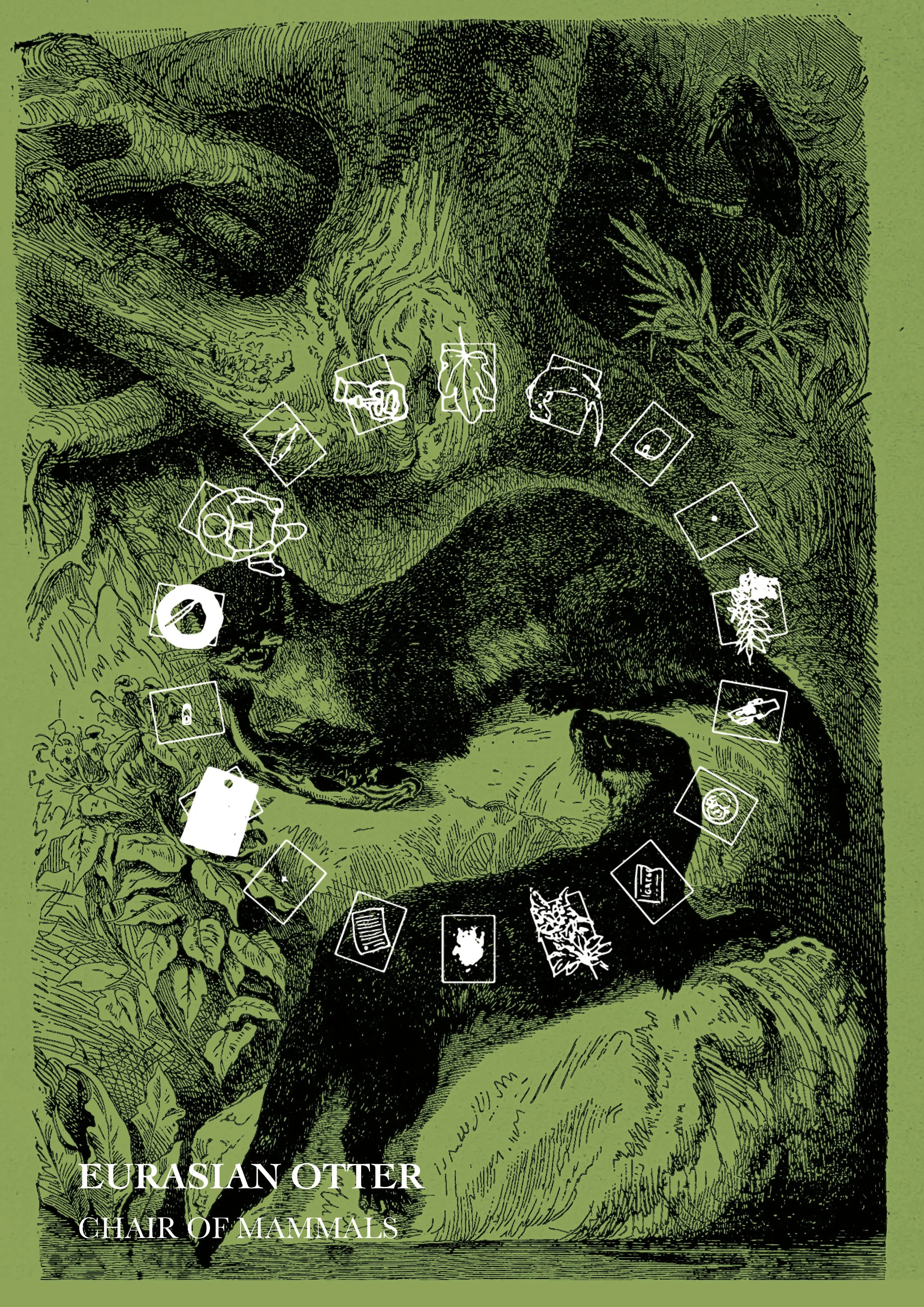Eurasian otter
Chair of mammals
Otter is an elusive carnivore well-suited to life on land and in the water. They live wherever there is clean freshwater with plenty of food and secluded areas of vegetation to rest and raise young. Therefore, these conditions make rivers, canals and lakes an ideal place for otters. During the 1950s otters were pushed to the brink of extinction due to water pollution, persecution and habitat destruction. For example in Sheffield, much of the local steel industry and associated coal industry developed along river corridors, and consequently, the rivers suffered badly. However recently these shy creatures have been seen hunting in a river once so polluted it could catch fire. The return of the species that hasn’t been seen in river Sheaf for over half a century has direct links to the improvement of the water quality. Today otters have no natural predators, but pollution and road traffic accidents remain a threat.
Saarmas on karnivoor, kes on loodud nii eluks vees kui ka maal. Nad elavad seal, kus on puhast vett, toitu ja eraldatud alasid. Need tingimused muudavad jõed ja kanalid ideaalseks elupaigaks saarmastele. Halva jõgede vee kvaliteedi pärast olid saarmad 1950ndate Inglismaal väljasuremisohus. Eriti halvad olid tingimused Sheffieldi jõgedes tugevalt arenenud terase- ja söetööstuse pärast. Õnneks on hiljuti nähtud saarmaid taas nendes Sheffieldi jõgedes, mis kunagi olid suure reostuse tõttu tuleohtlikud. Liigi naasmine Sheaf’i jõkke peale poolt sajandit, on märk veekvaliteedi paranemisest. Täna pole saarmas enam loomulikult ohustatud, kuid reoste ning inimesed on endiselt suur probleem saarma elus.
Entanglements to other actors:
Atlantic salmon: The otter's diet is mostly made up of fish, particularly eels and salmonids such as salmon.
Soil:You are more likely to see evidence of otters such as footprints and marks on the soil, rather than seeing otters themselves.
Legislation: The 1980s were a turning point as otters were given their current protection
Alice Jaanus
